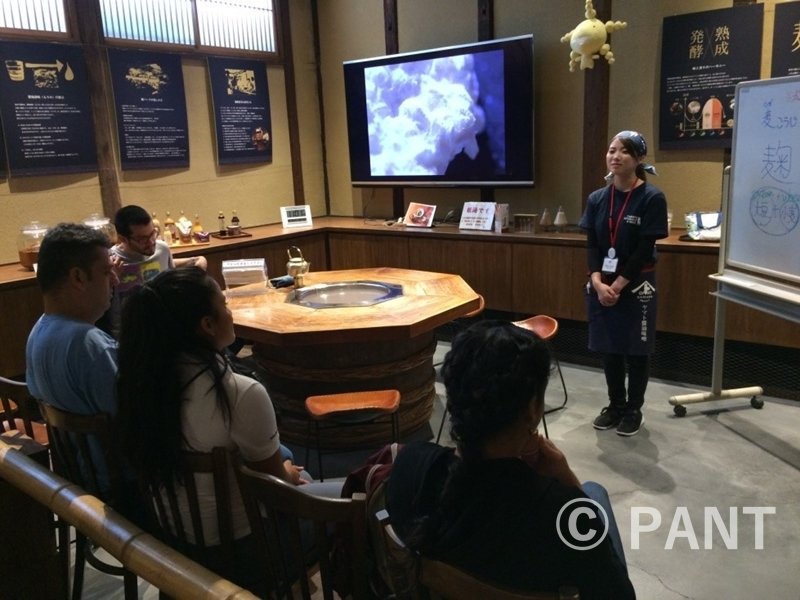Trainees report:Kanazawa Training Program:October 15, 2019
Miguel Ángel Echeverría Tager
(2019/10/16)
The trip to Ono that was canceled due to the typhoon was rescheduled for today, Tuesday, October 15. Ms. Risa Ogata and Mr. Alejandro Falla took us on a short bus ride to this seaside town that is famous for its soy sauce breweries. Ono is a town that has a name intertwined with its soy production. Among the Japanese population around this area —and maybe even farther away—, soy sauce and miso soup are synonyms of Ono. Soy is a staple grain in Japanese food: soy sauce, miso soup, tofu. What corn was for America and wheat for Europe, soy is for Asia. We stopped first at the Yamata Soy Souce and Miso brewery, the most famous of this area.
While waiting for the brewery to open, we spent some time at the shop next door, a shop that is also part of the brewery we were going to visit. We were all surprised to see the many types of soy sauce produced only by this factory. Soy sauces are produced specifically to match certain recipes: soy sauce for sushi, soy sauce for ponzu, sour soy sauce, sweet soy sauce. Back in Guatemala, Mr. Francisco Cano noted, we barely know that soy sauce exists. And we only buy it in small bottles, not by the gallon.
Once in the brewery, a very amicable young Japanese explained to us the process of producing soy sauce. She worked next door, at the shop we had just visited, giving free samples of the products and explaining the process of their production and she was already expecting us. She began by explaining the properties of soy and the chemical process of fermentation. Her presentation was both educational and promotional. Ms. Ingrid Morales commented that before hearing her, she had no idea that it was involved in soy sauce production. This is yet one more fact that I learned during this trip.
Continuing the presentation, our host then talked about the importance of soy in Japanese cuisine and briefed us on the history of the Yamato brewery and its origins at the beginning of the XX century. When her presentation was over, she even took us out to see the actual place that served as a dock for incoming shipments of soy in its early days.

The group of trainees hearing the explanation of the process of fermenting soy
The promotional efficacy of that presentation directed every one of us to buy the products sold at the shop, the various types of soy sauce, miso, and some other unsuspected specialties of the house. Representing the whole group of trainees, Ms. Cristel Pineda and I ventured to try ice-cream with soy sauce, something we would have never thought of mixing. A welcome surprise, soy sauce with soft milk ice-cream was so delicious that we bought a bottle of the specific sweet soy sauce produced for desserts.
After visiting the Yamato soy sauce brewery, we stopped by another soy sauce shop. The owner of the shop explained to us the various types of products that are made out of soy that he sells. This shop seemed like a collective shop where all the local breweries take their products and sell them. The shop also serves coffee and offers a limited menu based on local seafood. We decided that lunch was going to wait until we were back at Korinbo.
Having finished with all the visits the workshop had planned for us, we went back to the classroom to report our observations of the trip to Tatsuyama and Shirakawa-go to Prof. Seiichi Nakamura. We all had different appreciations of the places we had seen, but we all agreed that these two visits were going to be in one way or another the models of the projects we are going to present at the end of this workshop. And so, we began thinking and writing preliminary drafts of our ideas for those projects.
